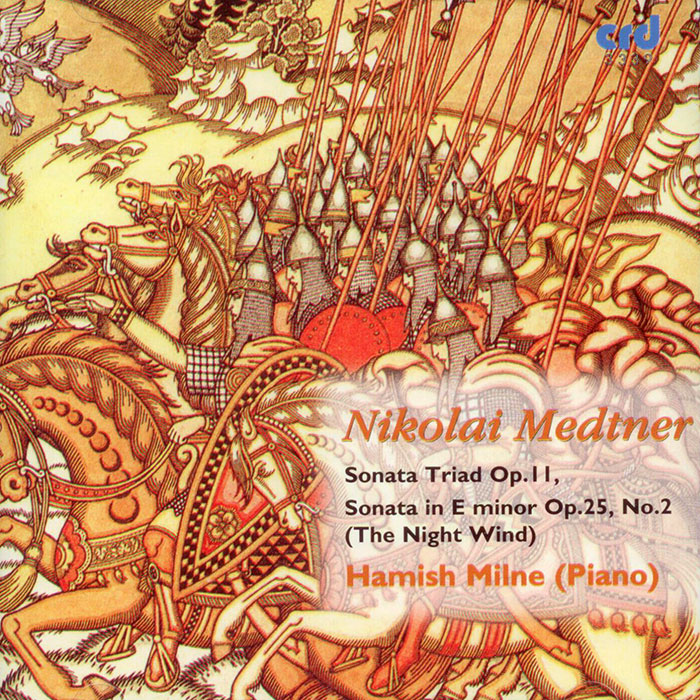Logowanie
Dlaczego wszystkjie inne nie brzmią tak jak te?
SpeakersCorner - OSTATNIE!!!!
RAVEL, DEBUSSY, Paul Paray, Detroit Symphony Orchestra
Prelude a l'Apres-midi d'un faune / Petite Suite / Valses nobles et sentimentales / Le Tombeau de Couperin
Samozapłon gwarantowany - Himalaje sztuki audiofilskiej
PROKOFIEV, Stanislaw Skrowaczewski, Minneapolis Symphony Orchestra
Romeo and Juliet
Stanisław Skrowaczewski,
✟ 22-02-2017
BARTOK, Antal Dorati, Philharmonia Hungarica
Dance Suite / Two Portraits / Two Excerpts From 'Mikrokosmos'
Samozapłon gwarantowany - Himalaje sztuki audiofilskiej
ENESCU, LISZT, Antal Dorati, The London Symphony Orchestra
Two Roumanian Rhapsodies / Hungarian Rhapsody Nos. 2 & 3
Samozapłon gwarantowany - Himalaje sztuki audiofilskiej
Winylowy niezbędnik
ClearAudio
Cartridge Alignment Gauge - uniwersalny przyrząd do ustawiania geometrii wkładki i ramienia
Jedyny na rynku, tak wszechstronny i właściwy do każdego typu gramofonu!
ClearAudio
Harmo-nicer - nie tylko mata gramofonowa
Najlepsze rozwiązania leżą tuż obok
IDEALNA MATA ANTYPOŚLIZGOWA I ANTYWIBRACYJNA.
Wzorcowe
Carmen Gomes
Celebrating the art and spirit of music - vol. 5 - Reference Songs
- CHCECIE TO WIERZCIE, CHCECIE - NIE WIERZCIE, ALE TO NIE JEST ZŁUDZENIE!!!
Petra Rosa, Eddie C.
Celebrating the art and spirit of music - vol. 3 - Pure
warm sophisticated voice...
SAMPLER - STS DIGITAL, Gregor Hamilton
Celebrating the art and spirit of music - vol. 2 - Love songs from Gregor Hamilton
...jak opanować serca bicie?...
SAMPLER - STS DIGITAL
Celebrating the art and spirit of music - vol. 1 - Leonardo Amuedo
Największy romans sopranu z głębokim basem... wiosennym
Lils Mackintosh
Celebrating the art and spirit of music - vol. 4 - A Tribute to Billie Holiday
Uczennica godna swej Mistrzyni
MEDTNER
Sonata Triad /Sonata E minor (The Night Wind)
- MEDTNER
Nikolai Karlovich Medtner was a Russian Composer and pianist. He composed somewhat over sixty groups of works given opus numbers (and a few works not,) including works for piano solo, with violin, voice, quartet, second piano, and with orchestra. Among these are fourteen piano sonatas, three more with violin (and one more with wordless solo voice,) and three piano concerti. He left Russia after the Revolution as did his friend Rachmaninov, but only settled in London in 1936. HMV made recordings at the end of his life when the Maharajah of Mysore became interested in his music, of his pianism in his own works and those of others. In some of these recordings he accompanied Benno Moiseiwitsch in two-piano music; they also feature Elisabeth Schwarzkopf singing several of his lieder, including The Muse, a Pushkin setting from 1913. The second, third and fourth piano sonatas, one‐movement works each, can be played separately, but form the Sonata-Triad (op. 11, in A-flat, d minor and C major. Written 1904 – 1908.) The d minor has the title Sonate-Elegie, opening slowly though closing with quite the coda (Allegro molto doppio movimento, in the major...); the A-flat is fairly subdued, and the C major while not brash might still be considered a great coda to the set. The fifth and most popular of his sonatas, the g minor opus 22 of 1909 – 1910, alternates a slow introduction with a three‐theme, propulsive, sonata movement one of whose themes was heard in the introduction. The formal and emotional center of this brief work (fifteen minutes or so) is the Interludium: Andante lugubre which takes the place of most of the development section. The sixth sonata followed soon after, one of a group of two, his opus 25. This brief c minor sonata, Folk-tale Sonata, written in 1910 – 1911, is in three movements (the second and third connected,) Allegro abbandonamente, Andantino con moto, and Allegro con spirito. The opening is a regular sonata form, while the slow movement keeps returning to its main theme (the work it reminds many people of was not written for thirty years more,) while the minatory final march with variations ends with a coda which sees the themes from earlier movements through odd angles. The other half of opus 25 — the seventh sonata in e minor, Night Wind (after Tyutchev, an excerpt from whose poem Silence provides the epigraph,) written in 1911, is a one movement work in several parts, usually lasting somewhat over a half-hour, and one of Medtner's most ambitious efforts. It is basically a sonata-movement followed by a fantasy, ending in a shadowed but active coda.





























